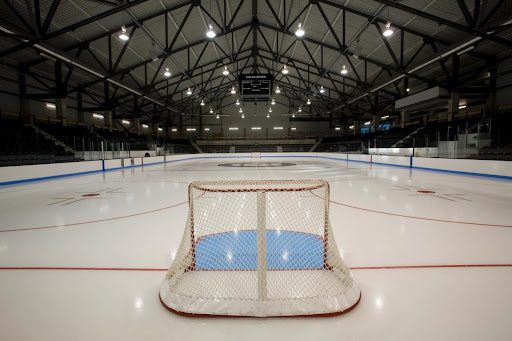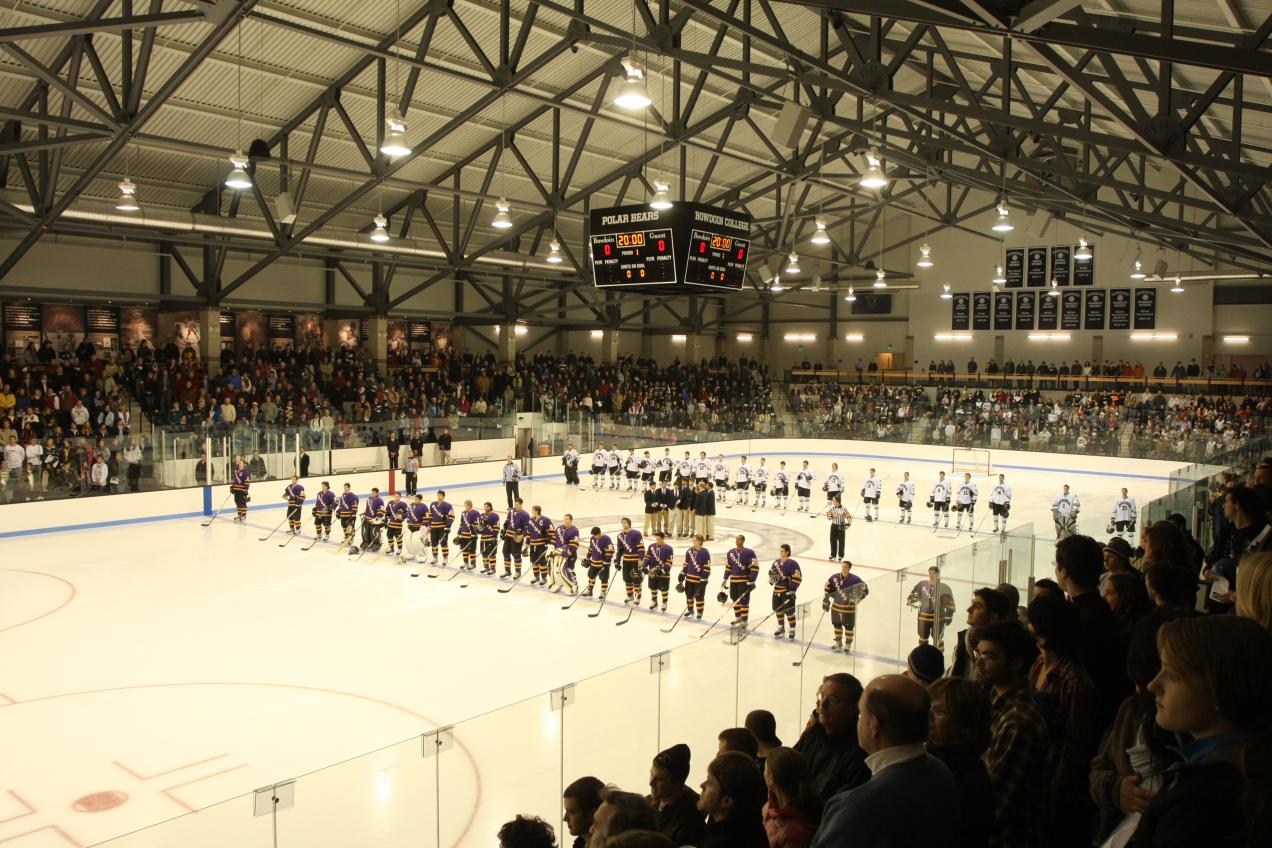The Bowdoin College motto “as an eagle towards the sky” creates an image of environmental focus, it’s no surprise its building efforts would as well.
Bowdoin College, located about a half-hour north of Portland, Maine, has long been a major player in NCAA Division III ice hockey. So when this small college planned to build a new hockey facility to replace its 50-year-old Quonset hut-style Dayton Arena, Bowdoin wanted it to be first-rate.
When the Sidney J. Watson Arena opened in 2009, the building boasted a large ice surface, seats that were closer to the action, an upgraded locker room and training facility. It is also an environmentally conscious built facility. Bowdoin was focused on building a world-class hockey venue, but it also wanted to construct a structure that was environmentally friendly.
In 2007, Bowdoin was among the 270 colleges and universities that signed the American College and University Presidents Climate Commitment, and the school pledged to achieve carbon neutrality by 2020.

Bowdoin reached carbon neutrality in 2018 – only the third U.S. college to accomplish this!
Since the hockey arena would be one of the school’s showcase buildings, Bowdoin paid attention to environmental factors in the arena’s design, construction and operations. The school was rewarded for its concerted efforts. The Watson Arena was the first newly built college hockey arena in America to be awarded LEED certification from the U.S. Green Building Council.
A comprehensive construction waste plan was conceived for the arena’s building stage.
Over 80% of construction debris was reused or recycled. Moreover, pre-and post-consumer recycled material accounted for 30% of the building materials, such as structural steel, rebar, drywall, glass, and translucent panels. 40% of the building materials came from within 500 miles of the Bowdoin campus in Brunswick, Maine; this reduced carbon emissions and greenhouse gas effects that otherwise would have been generated through transportation.
The wood products utilized in the arena’s construction were all Forest Stewardship Council (FSC) certified and free of urea-formaldehyde. After construction was finished, a two-week flush-out was done to remove any negative air quality elements remaining from building construction. Using sealants, paints, coatings, adhesives, and carpet systems that contained low levels of volatile organic compounds helped to make for superb air quality inside the arena. Another eco-minded design feature is the arena’s parking area. Priority parking spots are reserved for fuel-efficient and low-emission vehicles as a way to incentivize fans to use types of environmentally friendly transportation.
The installation of low-flow faucets, toilets, showers, and urinals reduced water use by nearly 25%. More water conservation was attained by landscaping with indigenous plants, which are low maintenance and require no irrigation. Upgrades to the stormwater management,
included two infiltration systems that sent clean rainwater from the roof into an aquifer along with a pair of retention ponds that took sedimentation and debris out of the stormwater runoff, which lowered peak flow rates into the watershed.
The roof sports a reflective surface that shields against the “heat island effect.” Consequently, temperature increases that might arise at different spots inside the arena are avoided, which then lessens the building’s cooling loads. The Watson Arena also is one of the four campus locations with a solar installation. These solar panels combine with Bowdoin’s off-campus photovoltaic solar complex to provide nearly 10% of the college’s annual energy usage.

The Watson Arena functions with a high degree of energy efficiency due to its advanced building envelope design, innovative heat recovery and dehumidification systems.
It has been estimated that Watson Arena needs 17% less energy than a traditional arena does.
Savings are achieved through high tech devices like an infrared camera,
that can make pinpoint measurements of the ice temperature, and this information allows the arena’s cooling systems to regulate the rink’s refrigeration levels. Additionally, Renewable Energy Credits (RECs) offset more than a third of the arena’s electricity usage. The RECs are purchased from a certified low-hydro facility located a few miles from Bowdoin’s campus.
Bowdoin’s entire athletic department has been involved in the college’s campus-wide green initiatives. In 2011, a group of ecology-minded athletes started the Bowdoin Green Athletics Program that has worked with the college’s Sustainability Office and Athletics Department to integrate sustainability into Bowdoin’s sports programs. Various teams have participated in a friendly Team Challenge, where they compete to reduce waste and other environmental efforts. The college’s teams also have played Green Games to raise ecological awareness around campus, as well as taken part in the EPA’s GameDay Challenge that similarly promotes environmentalism.
Sustainability measures have been implemented in many of Bowdoin’s sports-related buildings, both old and new. Pickard Field’s multiple fields have a water-conserving underground irrigation system; Whittier Field features an organic field, and the LEED-honored Peter Buck Center for Health & Fitness is Bowdoin’s first building with a green roof.
While Bowdoin hit its carbon neutrality goal early, the school continues on its environmental quest. The college wants all new constructions to match LEED qualifications and have the long-term capacity to reduce Bowdoin’s carbon footprint.
As Bowdoin’s president Clayton Rose stated in 2018 upon reaching carbon neutrality two years early: “we are pausing today to celebrate this achievement a full two years ahead of schedule, and we are simultaneously renewing our pledge to keep moving forward,” wrote Rose in an email to the Bowdoin community.





